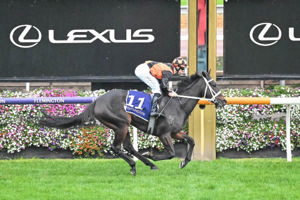It follows that if it's of special interest to us, it will be of special interest to horse industry players running a business on rural property.
This case was decided in the Supreme Court of NSW on 30 January 2017 and is an extension of the immense scrutiny that NSW land owners have been subjected to in the past few years, especially those trying to claim a "primary production" land tax exemption.
Though, given the uniformity of land tax exemption laws across Australia, the principles in this case extend to land owners in other states who are trying to claim primary production land tax exemption where the land also has a competing purpose, e.g. part of the land is being developed for residential housing purposes.
The interesting aspect of this case as that in some of the years land tax exemption was not granted even though the primary production activity was still being carried on and the sale of the property had not even commenced. Expenditure incurred was the major consideration as to what activity was "dominant".
Issue
The issue was whether a company called Leppington Pastoral Co Pty Ltd ("Leppington"), was exempt from NSW Land Tax in respect of land which was a dairy farm but also part of a major residential project whereby farmland was being progressively released for urban development. This case turned on the question of whether the 'dominant use' of land was 'primary production'.
Facts
Leppington owned and operated a dairy farm on land in and around an area south-west of Sydney.
During the 2011 to 2014 land tax years, a significant portion of Leppington's land (the 'Farmland') was progressively released to a developer ('GDC') for the purpose of building a new township with associated housing (the 'development land').
GDC and its contractors had a right to access the Farmland prior to it becoming development land under a licence granted to Leppington, under which GDC:
was required to notify Leppington prior to accessing the land; and
had an obligation to cause as little disruption as possible to farming operations being carried out on it.
GDC used the Farmland during this period to carry out:
earthworks relating to adjacent Development Land; and
tests, either to obtain consents for future development on the Farmland, or to satisfy conditions of approval on either the Farmland or the Development Land.
The Land Tax Commissioner ('LTC') assessed Leppington to land tax in respect of both the Development Land and Farmland for the 2011,2012, 2013 and 2014 land tax years. Leppington objected to the LTC's assessments in respect of the Farmland portion.
Land Tax exemption rules for Primary Producers
Under Section 10AA of the NSW Land Tax Management Act 1956 :
Land that is rural land is exempt from taxation if it is land used for primary production.
For the purposes of this section, land used for "primary production" means land
the dominant use of which is for:
…
(b) the maintenance of animals (including birds), whether wild or domesticated, for the purpose of selling them or their natural increase or bodily produce, or
Leppington's contentions
Leppington claimed that during the 2011-2014 land tax years, the dominant use of the Farmland was primary production because that use was physicall y and economically dominant over the non-primary production use of the Farmland during those tax years.
Land Tax Commissioner contentions
The LTC did not dispute that the Farmland was used for "primary production" as defined in the above section. He did however consider that the dominant use of the Farmland in the 2011-2014 land tax years was preparing the Farmland for imminent development, and carrying out development activities relating to adjacent land.
Court decision
The Supreme Court decision was a "shared" victory for Leppington and the LTC.
The court held that Leppington had satisfied its onus of proving that the dominant use of the Farmland was primary production for the 2012 and 2013 land tax years, but not for the 2011 and 2014 years.
His Honour examined the ordinary meaning of the term "dominant" and concluded that based on dictionary definitions, the term "carries the notion of not just being the chief use or most influential use, but of being a ruling, governing or commanding use".
"Dominant use" factors
His Honour noted that in determining the 'dominant use' of the Farmland in each land tax year, it is necessary to consider:
the scale and intensity of the primary production use of the Farmland, and relevant to – but not determinative of that question – is the extent to which use of the subject lands makes a financial contribution to Leppington's dairy operations;
whether activities conducted by GDC on the Farmland amounted to the commencement of use of the Farmland for residential development or whether residential development remained a contemplated future use; and
the nature, extent and intensity of the various uses of the Farmland, the extent of the Farmland used for different purposes and the time, labour and resources spent in using the Farmland for each purpose.
Having regard to these considerations, the Court held that for the 2012 and 2013 land tax years:
the evidence showed that the only substantial competing use of the Farmland was by consultants for the purpose of carrying out tests in connection with existing and proposed residential development. There was also a small amount of earthworks. Together, this development work was "episodic" and carried out only over a small area, such that overall, the primary production use of the Farmland in those years dominated .
therefore Leppington had established that the dominant use of Farmland was primary production, and that the LTC's land tax assessment relating to the Farmland should be revoked for those years.
However, for the 2011 and 2014 years, the Court held that Leppington had failed to establish that the dominant use of the Farmland was primary production, and therefore the LTC's land tax assessments for those years should be confirmed, i.e. no exemption.
His Honour found:
For the 2011 land tax year, there was imprecision in Leppington's evidence as to the value to it of the primary production activities on the Farmland. Furthermore, the evidence clearly showed substantial expenditure by GDC on earthworks and on consultant's activities which exceeded Leppington's expenditure on cattle grazing and raising of pastures and crops. His Honour inferred that based on the expenditure on each competing use, the development activities were of greater value to GDC in the 2011 year than the primary production activities were to Leppington.
For the 2014 land year, the evidence established the extensive earthworks were carried out on the Farmland, and the costs incurred by GDC for consultants werealmost double the costs in 2012 and 2013 combined, while the primary production use was materially less than it had been for 2012 and 2013.
For the really curious, NSW Revenue Ruling No. LT 097 on the topic of "Land Used for Primary Production" is the best authority for this decision.
Please contact me if you wish for me to clarify or expand on any of the matters raised in this article.
PAUL CARRAZZO CPA
CARRAZZO CONSULTING CPAs
801 Glenferrie Road, Hawthorn, VIC, 3122
TEL: (03) 9982 1000
FAX: (03) 9329 8355
MOB: 0417 549 347










